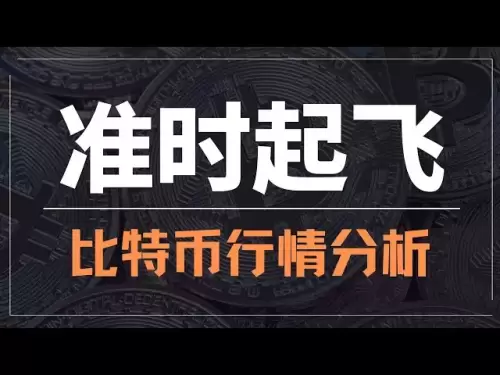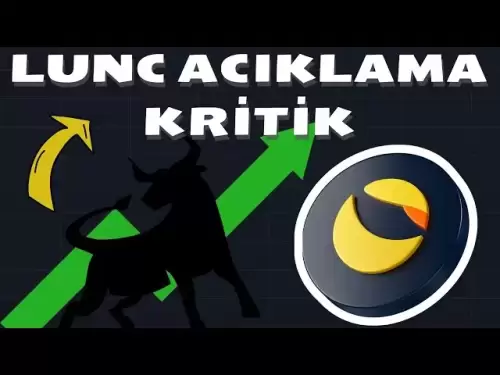-
 Bitcoin
Bitcoin $116800
1.37% -
 Ethereum
Ethereum $3832
5.15% -
 XRP
XRP $3.063
2.69% -
 Tether USDt
Tether USDt $1.000
0.04% -
 BNB
BNB $774.1
0.84% -
 Solana
Solana $170.7
1.56% -
 USDC
USDC $0.0000
0.01% -
 Dogecoin
Dogecoin $0.2142
5.31% -
 TRON
TRON $0.3406
1.90% -
 Cardano
Cardano $0.7635
3.81% -
 Hyperliquid
Hyperliquid $39.55
2.42% -
 Sui
Sui $3.732
7.71% -
 Stellar
Stellar $0.4127
4.25% -
 Chainlink
Chainlink $17.80
6.91% -
 Bitcoin Cash
Bitcoin Cash $576.7
1.66% -
 Hedera
Hedera $0.2521
3.28% -
 Ethena USDe
Ethena USDe $1.001
0.01% -
 Avalanche
Avalanche $22.66
2.19% -
 Litecoin
Litecoin $121.3
2.98% -
 UNUS SED LEO
UNUS SED LEO $8.959
-0.31% -
 Toncoin
Toncoin $3.325
2.88% -
 Shiba Inu
Shiba Inu $0.00001263
2.84% -
 Uniswap
Uniswap $10.11
4.79% -
 Polkadot
Polkadot $3.769
3.22% -
 Dai
Dai $1.000
0.01% -
 Bitget Token
Bitget Token $4.413
1.46% -
 Monero
Monero $272.9
-4.98% -
 Cronos
Cronos $0.1488
4.22% -
 Pepe
Pepe $0.00001088
4.01% -
 Aave
Aave $273.0
4.73%
What should I do after the head and shoulders top pattern of XRP appears?
After spotting a head and shoulders top pattern on XRP's chart, confirm the breakout, implement risk management, and consider short positions or adjusting your long-term strategy.
Apr 19, 2025 at 01:28 am

The head and shoulders top pattern is a significant technical analysis indicator that many traders and investors in the cryptocurrency market, including those involved with XRP, pay close attention to. When this pattern appears in the price chart of XRP, it is often interpreted as a bearish signal, suggesting that a reversal in the current uptrend may be imminent. Understanding what to do after spotting this pattern is crucial for managing your investments effectively. This article will guide you through the steps you should consider after identifying a head and shoulders top pattern on XRP's price chart.
Identifying the Head and Shoulders Top Pattern
Before taking any action, it's essential to confirm that the pattern you've spotted is indeed a head and shoulders top. The pattern consists of three peaks, with the middle peak (the head) being the highest and the two outer peaks (the shoulders) being roughly equal in height. A neckline is drawn by connecting the lowest points of the two troughs between the peaks.
- Left Shoulder: This is the first peak in the pattern.
- Head: The highest peak, situated between the two shoulders.
- Right Shoulder: The final peak, usually slightly lower than the left shoulder.
- Neckline: A line connecting the lows of the troughs between the head and shoulders.
To confirm the pattern, watch for the price to break below the neckline. This break is considered a confirmation of the bearish reversal.
Analyzing the Breakout
Once the price of XRP breaks below the neckline, it's time to analyze the breakout. The volume during the breakout is a critical factor to consider. If the volume is significantly higher than average, it strengthens the bearish signal. Additionally, measure the distance from the head to the neckline to estimate the potential downward move. This distance can be projected downward from the point of the neckline break to set a target price.
Implementing Risk Management Strategies
After confirming the head and shoulders top pattern and analyzing the breakout, the next step is to implement risk management strategies. This involves setting stop-loss orders and determining your position size.
- Stop-Loss Orders: Place a stop-loss order just above the right shoulder or the neckline to limit potential losses if the price unexpectedly reverses.
- Position Sizing: Adjust your position size based on your risk tolerance and the potential downside move calculated from the pattern.
Considering Short Positions
For traders who engage in short selling, the head and shoulders top pattern can be an opportunity to open short positions on XRP. Before shorting, ensure that the breakout is confirmed and that other market indicators align with a bearish outlook.
- Entry Point: Enter a short position after the price breaks below the neckline with increased volume.
- Target Price: Use the projected distance from the head to the neckline as your target for the short position.
- Stop-Loss: Set a stop-loss just above the right shoulder to manage risk.
Monitoring Market Sentiment and Other Indicators
While the head and shoulders top pattern is a powerful tool, it should not be used in isolation. Monitor market sentiment and other technical indicators to gain a more comprehensive view of XRP's potential price movement.
- Market Sentiment: Check social media, news, and forums to gauge the overall sentiment towards XRP.
- Other Technical Indicators: Use indicators like the Relative Strength Index (RSI), Moving Averages, and the MACD to confirm the bearish signal from the head and shoulders pattern.
Adjusting Your Long-Term Strategy
If you are a long-term investor in XRP, the appearance of a head and shoulders top pattern should prompt you to reassess your investment strategy. While it might not necessarily mean selling all your holdings immediately, it could be a signal to take profits or rebalance your portfolio.
- Profit-Taking: If XRP has been in a prolonged uptrend, consider taking some profits off the table.
- Rebalancing: Adjust your portfolio to reduce exposure to XRP if the bearish signal is strong and other indicators align.
Frequently Asked Questions
Q: Can the head and shoulders top pattern fail, and what should I do if it does?
A: Yes, the head and shoulders top pattern can fail if the price breaks above the neckline after initially breaking below it. If this happens, it's important to reassess your position. If you have a short position, consider closing it to limit losses. If you're a long-term investor, you might want to hold your position and monitor other indicators to see if the bullish trend resumes.
Q: How reliable is the head and shoulders top pattern for predicting XRP's price movement?
A: The head and shoulders top pattern is considered one of the most reliable reversal patterns in technical analysis. However, its reliability can vary depending on market conditions and other factors. It's always best to use it in conjunction with other indicators and market analysis to increase its effectiveness.
Q: Should I always sell my XRP holdings when a head and shoulders top pattern appears?
A: Not necessarily. While the pattern is a bearish signal, it's important to consider your overall investment strategy and risk tolerance. If you're a long-term investor, you might choose to hold your position and wait for further confirmation of a trend reversal. Always use the pattern as part of a broader analysis.
Q: Can the head and shoulders top pattern appear on different time frames, and does it affect my strategy?
A: Yes, the head and shoulders top pattern can appear on various time frames, from short-term charts like 1-hour to long-term charts like weekly or monthly. The time frame you're analyzing can affect your strategy. For short-term traders, a pattern on a shorter time frame might prompt quicker action, while long-term investors might focus on patterns on longer time frames for more significant trend changes.
Disclaimer:info@kdj.com
The information provided is not trading advice. kdj.com does not assume any responsibility for any investments made based on the information provided in this article. Cryptocurrencies are highly volatile and it is highly recommended that you invest with caution after thorough research!
If you believe that the content used on this website infringes your copyright, please contact us immediately (info@kdj.com) and we will delete it promptly.
- Ripple, Rail, and Stablecoin Payments: A $200M Power Play
- 2025-08-07 22:50:12
- Punisher Coin Presale: The Next $Trump? Aiming for 100x Gains!
- 2025-08-07 22:50:12
- Riding the Crypto Wave: Presale Cryptos, Cold Wallets, and the BTC Bull Run
- 2025-08-07 23:10:12
- Crypto's Wild Ride: Punisher Coin, Popcat, and the Meme Coin Mania
- 2025-08-07 23:10:12
- Bitcoin Price, XRP Prediction, Cryptocurrency: Navigating the Wild West of Digital Assets
- 2025-08-07 23:15:12
- WiMi, Quantum Computing, and AR Tech: Navigating the Future Today
- 2025-08-07 22:30:12
Related knowledge

How to avoid common crypto investment mistakes?
Jul 13,2025 at 01:35am
Understanding the Risks of Crypto InvestmentInvesting in cryptocurrency can be highly rewarding, but it also comes with significant risks. One of the ...

What is a long-short crypto strategy?
Jul 15,2025 at 10:56am
Understanding the Basics of a Long-Short Crypto StrategyA long-short crypto strategy is an investment approach where traders simultaneously take long ...

What is a long-short crypto strategy?
Jul 11,2025 at 01:28pm
Understanding the Basics of Long-Short Crypto StrategyA long-short crypto strategy is an investment approach where traders take both long and short po...

How to use the RSI indicator for crypto?
Jul 12,2025 at 03:56pm
Understanding the RSI Indicator in Cryptocurrency TradingThe Relative Strength Index (RSI) is a momentum oscillator used to measure the speed and chan...

Is copy trading a good strategy for crypto beginners?
Jul 12,2025 at 08:28am
Understanding Copy Trading in the Cryptocurrency MarketCopy trading is a strategy where novice traders replicate the trades of experienced investors a...

How to build a crypto portfolio with $1000?
Jul 13,2025 at 08:14pm
Understanding the Basics of Cryptocurrency InvestmentBuilding a crypto portfolio with $1000 starts with understanding the fundamentals of cryptocurren...

How to avoid common crypto investment mistakes?
Jul 13,2025 at 01:35am
Understanding the Risks of Crypto InvestmentInvesting in cryptocurrency can be highly rewarding, but it also comes with significant risks. One of the ...

What is a long-short crypto strategy?
Jul 15,2025 at 10:56am
Understanding the Basics of a Long-Short Crypto StrategyA long-short crypto strategy is an investment approach where traders simultaneously take long ...

What is a long-short crypto strategy?
Jul 11,2025 at 01:28pm
Understanding the Basics of Long-Short Crypto StrategyA long-short crypto strategy is an investment approach where traders take both long and short po...

How to use the RSI indicator for crypto?
Jul 12,2025 at 03:56pm
Understanding the RSI Indicator in Cryptocurrency TradingThe Relative Strength Index (RSI) is a momentum oscillator used to measure the speed and chan...

Is copy trading a good strategy for crypto beginners?
Jul 12,2025 at 08:28am
Understanding Copy Trading in the Cryptocurrency MarketCopy trading is a strategy where novice traders replicate the trades of experienced investors a...

How to build a crypto portfolio with $1000?
Jul 13,2025 at 08:14pm
Understanding the Basics of Cryptocurrency InvestmentBuilding a crypto portfolio with $1000 starts with understanding the fundamentals of cryptocurren...
See all articles

























































































